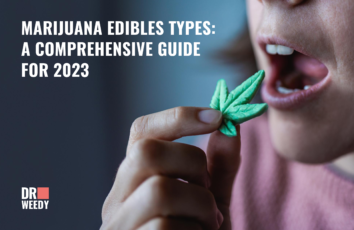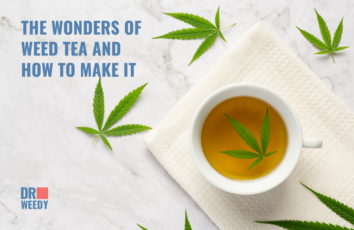Can You Eat THC Wax?
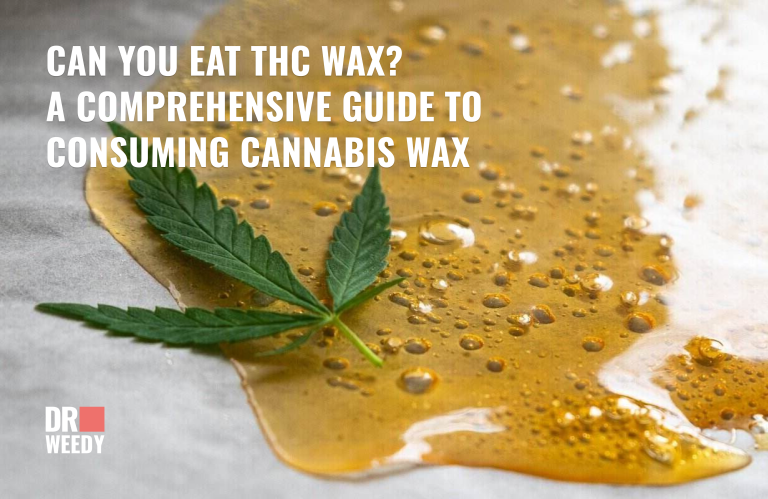
With the growing popularity of cannabis products, many people are exploring different methods of consumption. One such product that has gained traction is THC wax, a concentrated form of cannabis that contains high levels of THC. In this article, we will delve into whether it is safe to consume THC wax and the various methods of ingesting it, such as eating cannabis wax, smoking wax, and more.
What is marijuana WAX?

WAX THC, also known as THC wax, cannabis wax, weed wax or dabs, is a highly concentrated form of cannabis that is produced through a meticulous process of extracting THC (tetrahydrocannabinol), the primary psychoactive compound found in marijuana plants. The extraction process aims to separate THC from other plant materials, resulting in a viscous, sticky, and waxy substance with a much higher potency than traditional cannabis flowers or buds.
To create THC wax, raw cannabis plant materials undergo a series of solvent-based extraction methods, such as using butane or carbon dioxide (CO2), which help to isolate and collect the THC and other cannabinoids, terpenes, and flavonoids. Once the extraction is complete, the solvent is removed, and the remaining concentrated substance is left to cool and harden, forming a solid, waxy texture.
The THC concentration in wax can range from 60% to 90%, making it significantly stronger than traditional marijuana, which typically contains around 10% to 25% THC. Due to its high potency, THC wax is often consumed through a method known as “dabbing,” which involves heating a small amount of the wax on a hot surface, such as a dab rig, nail or banger, and inhaling the vapor produced.
In summary, WAX THC is a highly concentrated form of cannabis created by extracting THC from the marijuana plant, resulting in a powerful, waxy substance that offers users a more intense and potent experience than conventional cannabis flowers.
Can You Eat THC Wax?
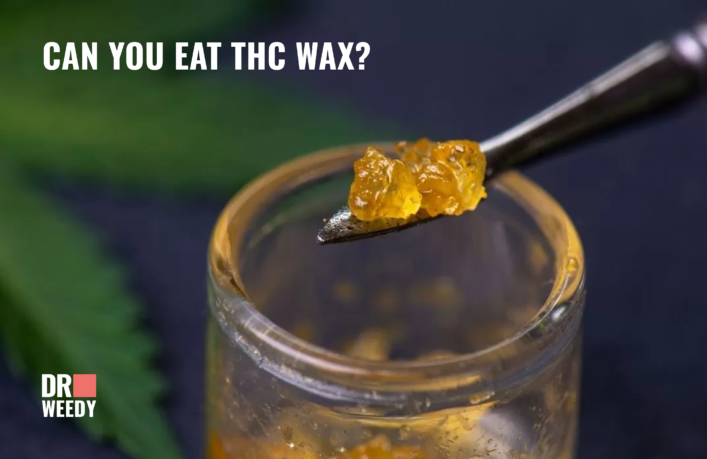
The short answer is yes, you can eat weed wax, but it is crucial to heat it first to activate its psychoactive properties, and be aware that the effects will not be immediate. Raw cannabis concentrates, including THC wax, contain THCA (tetrahydrocannabinolic acid), a non-psychoactive precursor to THC. To experience the desired effects, THCA must be converted into THC through a process called decarboxylation, which occurs when the concentrate is heated.
To consume THC wax safely and effectively, it is recommended to heat it first, either by incorporating it into recipes that involve cooking or baking or by heating it separately before mixing it with food or drink. After heating, start with a small amount and wait for at least an hour before considering consuming more, as the onset of effects may take longer when ingesting THC wax compared to smoking or vaping, since it must first be processed by the liver before entering the bloodstream (1). This will allow you to gauge your tolerance and avoid overconsumption, which can lead to uncomfortable side effects.
Comparing THC Wax to Other Cannabis Products: Pros, Cons, and Key Differences
|
Cannabis Product |
Potency |
Consumption Method |
Onset Time |
Duration of Effects |
|
THC Wax |
High (60-90%) |
Eating, Dabbing |
30 min – 2 hours* |
4-8 hours* |
|
Cannabis Flower |
Low (10-25%) |
Smoking, Vaporizing |
5-10 minutes |
1-4 hours |
|
Cannabis Edibles |
Varies |
Eating |
30 min – 2 hours |
4-8 hours |
|
Cannabis Tinctures |
Varies |
Sublingual, Oral |
15-45 minutes |
4-8 hours |
|
Cannabis Topicals |
Low |
Topical Application |
20-40 minutes |
2-6 hours |
*Note: The onset time and duration of effects for eating THC wax can vary depending on factors like metabolism, tolerance, and dosage. The table provides a general range for these variables.
Pros of consuming THC wax:
- High potency: Due to its high THC concentration, THC wax can provide more potent effects than traditional cannabis flowers. This can be beneficial for users seeking strong therapeutic or recreational effects.
- Discreet consumption: When eating cannabis wax, there is no smoke or strong odor associated with consumption, making it more discreet than smoking or vaping.
- Longer-lasting effects: Ingesting THC wax can result in longer-lasting effects compared to smoking or vaping, as it takes more time for the body to process the cannabinoids.
- Controlled dosing: When creating edibles with THC wax, it’s possible to calculate and control the dosage of THC more accurately, allowing users to tailor their experience to their preferences and tolerance levels.
Cons of consuming THC wax:
- Delayed onset: The effects of eating THC wax can take longer to set in compared to smoking or vaping, making it difficult for users to gauge their optimal dosage and potentially leading to overconsumption.
- Variable potency: The potency of marijuana wax can vary depending on the extraction process and the quality of the raw cannabis materials used, resulting in inconsistent experiences for users.
- Risk of contaminants: If the THC wax is sourced from an unreliable supplier, there is a risk of consuming contaminants such as residual solvents or pesticides.
- Legal considerations: In some jurisdictions, the possession and consumption of concentrated cannabis products like THC wax may be subject to stricter regulations than other forms of cannabis.
Eating THC Wax: The Edible Alternative
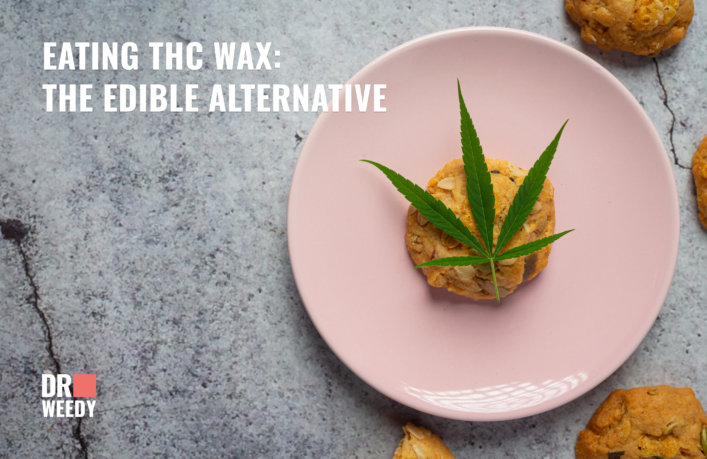
If you’re interested in consuming THC wax orally, a more popular and controlled method is to create or purchase edibles made with cannabis wax. Edibles, like cookies or gummies, are infused with THC wax, allowing for a more predictable dosing and a more enjoyable consumption experience (2).
It’s essential to follow proper dosing guidelines when consuming edibles, as they can take anywhere from 30 minutes to 2 hours to take effect, depending on factors like metabolism and stomach contents (3). Start with a low dose, typically 5-10mg of THC, and wait for the effects before consuming more.
Can You Eat Dabs, Marijuana Wax, and THC Wax
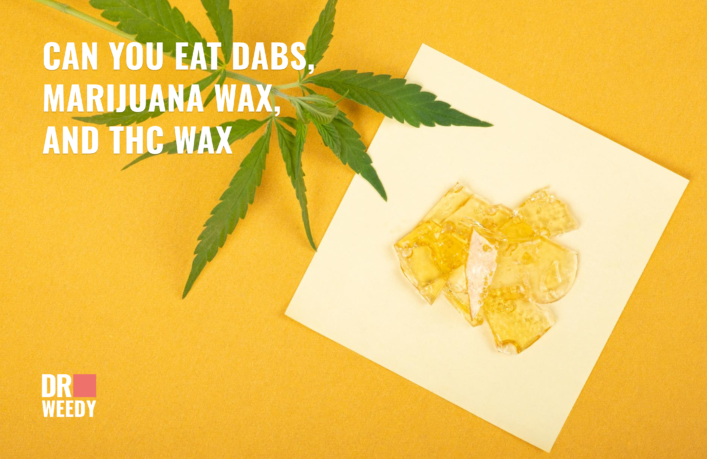
Dabs, marijuana wax, and THC wax are all terms used to describe the same concentrated cannabis product. As mentioned previously, you can eat these types of cannabis wax, but it’s crucial to be cautious with dosing and mindful of the delayed onset of effects. We recommend adding marijuana wax to food, rather than using it in its pure form, because it has a rather sticky consistency and it can be difficult to clean off your teeth.
Safety Precautions and Potential Risk
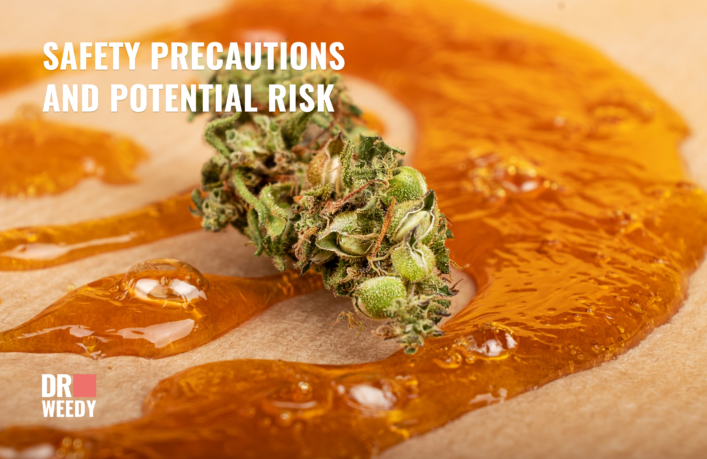
While consuming cannabis wax is generally safe, there are potential risks to be aware of. Overconsumption can lead to uncomfortable side effects, such as anxiety, paranoia, and increased heart rate (4). It’s also essential to source your weed wax from reputable suppliers, as poorly produced concentrates can contain harmful contaminants like residual solvents or pesticides (5).
Conclusion
In summary, you can consume THC wax by adding it to your regular diet. However, it’s important to understand the differences in onset time and potency when compared to smoking or vaping. To ensure a safe and enjoyable experience, consider consuming edibles made with cannabis wax or starting with a small dose and gradually increasing it as needed. Always source your cannabis wax from reputable suppliers to avoid potential contaminants and follow proper dosing guidelines to minimize the risk of overconsumption.
References:
- Lachenmeier, D. W., & Habel, S. (2019). Cannabis – extracting the medicine: How the oral bioavailability of cannabinoids can be improved. Deutsches Ärzteblatt International, 116(48), 809–810.
- Barrus, D. G., Capogrossi, K. L., Cates, S. C., Gourdet, C. K., Peiper, N. C., Novak, S. P., Lefever, T. W., & Wiley, J. L. (2016). Tasty THC: Promises and Challenges of Cannabis Edibles. Methods Report (RTI Press), 2016. https://doi.org/10.3768/rtipress.2016.op.0035.1611
- Grotenhermen, F. (2003). Pharmacokinetics and pharmacodynamics of cannabinoids. Clinical Pharmacokinetics, 42(4), 327–360. https://doi.org/10.2165/00003088-200342040-00003
- Volkow, N. D., Baler, R. D., Compton, W. M., & Weiss, S. R. B. (2014). Adverse health effects of marijuana use. The New England Journal of Medicine, 370(23), 2219–2227. https://doi.org/10.1056/NEJMra1402309
- Raber, J. C., Elzinga, S., & Kaplan, C. (2015). Understanding dabs: Contamination concerns of cannabis concentrates and cannabinoid transfer during the act of dabbing. The Journal of Toxicological Sciences, 40(6), 797–803. https://doi.org/10.2131/jts.40.797






















